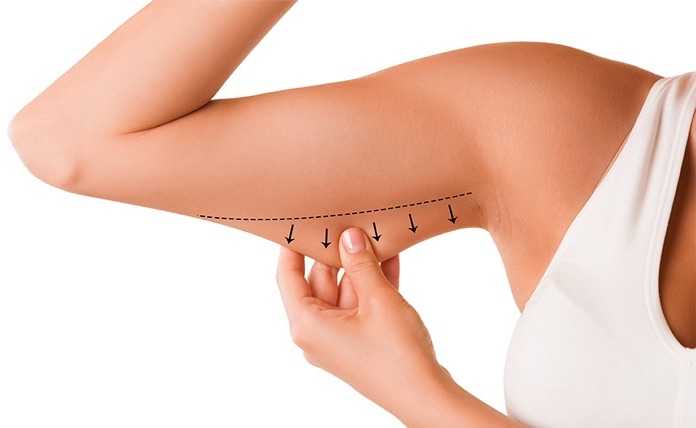Liposuction with fat transfer for sculpting arms is gaining popularity. This technique harvests unwanted fat from one area and redistributes it to enhance the result of the shape of the arms, placing it strategically according to the plan. It offers a dual benefit: reducing stubborn fat while creating a more toned appearance. Historically, liposuction has evolved significantly since its inception in the late 20th century. Today, advancements in technology make procedures safer and more effective. Many people seek this option to achieve their ideal body shape without extensive downtime. The results can be impressive, providing a natural look that boosts confidence. This post will explore how this innovative procedure works and its benefits for sculpting your arms.
Key Takeaways
-
Liposuction with fat transfer is an effective way to sculpt arms while enhancing volume in other areas, such as the breasts or buttocks.
-
The procedure is best suited for individuals who are at a stable weight and have realistic expectations about the results.
-
Understand the potential risks, including complications and recovery challenges, to make an informed decision.
-
Proper preparation is crucial; consult with a qualified surgeon to discuss your goals and ensure you’re a good candidate.
-
Follow post-procedure care instructions closely to promote healing and achieve the best results.
-
Long-term benefits include improved arm contour and enhanced body proportions, making it a worthwhile investment for many.
Understanding Liposuction with Fat Transfer
Liposuction Defined
Liposuction is the process of removing excess fat from specific areas of the body. This procedure targets stubborn fat deposits that do not respond to diet and exercise. Surgeons use a thin tube called a cannula to suction out fat. The results can lead to a more contoured appearance. It is commonly performed on various body parts, including structural fat grafting in the abdomen, thighs, and arms.
Upper arm liposuction specifically focuses on the arms. Many people seek this treatment to eliminate excess fat in their upper arms. This area can be challenging to tone through exercise alone, but options like arm liposuction and structural fat grafting may help. Successful liposuction can enhance the overall arm shape and improve self-confidence.
Fat Transfer Explained
Fat transfer involves harvesting fat from one area and injecting it into another. This technique is often used for contouring and volume enhancement, including arm liposuction and structural fat grafting. The fat transfer process starts with liposuction to collect fat. Once harvested, the fat undergoes purification to remove impurities. After that, it is re-injected into desired areas.
Fat transfers are popular for enhancing areas like the breasts or buttocks. However, they can also sculpt the arms effectively. The fat transplantation procedure allows for natural-looking results since it uses the patient’s own fat.
Combining Procedures
Combining liposuction with fat transfer creates a powerful approach to sculpting arms. The liposuction procedure removes unwanted fat while the fat grafting procedure adds volume where needed. This combination helps achieve a balanced look.
For instance, after performing traditional arm liposuction, surgeons can inject fat into the upper arm area for better contouring. This method addresses both excess fat removal and volume enhancement simultaneously.
Patients benefit from improved arm shape and reduced sagging skin. They enjoy a more youthful appearance through structural fat grafting without implants or fillers.
Benefits of Fat Grafting
Fat grafting surgery offers several advantages over synthetic options. Since it uses the patient’s own fat, there is less risk of rejection or allergic reactions. Results tend to look more natural compared to structural fat grafting and artificial fillers.
The recovery time for these structural fat grafting procedures is often shorter than expected. Patients may experience swelling and bruising but generally recover quickly. Most return to normal activities within a few weeks.
Considerations Before Surgery
Before undergoing arm liposuction treatment with fat transfer, patients should consult with qualified professionals. They must discuss their goals and expectations clearly. Understanding potential risks and complications is crucial.
Surgeons will evaluate each individual’s health history and body type before recommending procedures. A thorough assessment ensures the best possible outcomes.
Benefits of Arm Sculpting
Improved Contour
Arm sculpting surgery offers significant benefits. Patients often notice an improved arm contour and definition after the procedure. This change enhances overall appearance. It creates a more toned look, which many desire. The transformation helps boost confidence.
Excess arm fat can make the upper arms appear larger than desired. Many struggle with stubborn arm fat that does not respond to diet or exercise. Surgical arm sculpting options provide a solution for this issue. By removing unwanted fat, patients achieve a sleeker silhouette.
Dual Benefits
The process involves two key steps: fat removal and enhancement. First, surgeons remove excess arm fat. This step reduces size and improves shape. Second, the removed fat can be transferred to other areas of the body. This dual benefit is appealing to many individuals looking to refine body shapes.
Fat transfer uses the patient’s own fat, leading to natural results. The body accepts its own tissue better than synthetic materials. This method helps avoid complications associated with implants or fillers.
Natural Look and Feel
Using the patient’s own fat ensures a natural look and feel post-surgery. The results blend seamlessly with existing tissue. This approach minimizes the risk of rejection or allergic reactions. Many patients appreciate how their arms feel after recovery.
Upper arms recovery varies by individual but generally follows a predictable timeline. Most patients experience swelling and bruising initially. These symptoms typically subside within a few weeks. After this period, the new contour becomes more visible.
Patients should follow post-operative care instructions closely. Proper care aids in achieving optimal results and speeds up healing.
Enhanced Confidence
Many individuals report increased self-esteem after arm sculpting surgery. The newfound shape allows them to wear sleeveless tops confidently. They often feel more comfortable in social settings, leading to improved quality of life.
In summary, arm sculpting surgery provides numerous benefits. It effectively targets excess arm fat while enhancing overall body proportions. With natural results achieved through fat transfer, patients enjoy both aesthetic appeal and emotional satisfaction.
Ideal Candidates for the Procedure
Excess Fat
Individuals with excess fat in areas like the abdomen, thighs, or back may benefit from liposuction with fat transfer. They often seek a more sculpted arm appearance. This procedure allows surgeons to remove unwanted fat and use it to enhance the arms.
The ideal candidates usually have specific goals in mind. They desire defined arms but have trouble achieving this through diet and exercise alone. Those who have stubborn fat deposits are prime candidates for this cosmetic plastic surgery.
Overall Health
Good overall health is vital for anyone considering this procedure. Surgeons assess the patient’s medical history before proceeding. A healthy lifestyle leads to better recovery outcomes.
Patients should not smoke or have serious medical conditions that could complicate surgery. Realistic expectations are also crucial. Understanding what the procedure can and cannot achieve helps individuals make informed decisions.
Previous Issues
e individuals may look for solutions to correct previous liposuction issues. Past surgeries can sometimes lead to soft tissue irregularities. Liposuction with fat transfer can help smooth these areas and improve overall body contour.
Surgeons evaluate minor cases carefully. They determine if additional procedures are necessary to achieve desired results. Candidates should discuss their previous experiences openly with their surgeon.
Graft Areas
The success of fat transfer relies on selecting appropriate graft areas. These donor sites are where the surgeon will extract fat from the body. Common graft areas include the abdomen, thighs, and buttocks.
Fat harvested from these sites is injected into the arms to create volume and shape. This process requires skill from the surgeon to ensure an even distribution of fat. Proper technique minimizes complications and enhances aesthetic results.
Member Considerations
Potential candidates should consider their status as members of a community focused on wellness and aesthetics. Engaging with others who share similar goals can provide support during the process. Peer experiences often help in understanding what to expect before and after surgery.
Those interested should schedule consultations with qualified plastic surgeons. During these meetings, they can ask questions about the procedure, recovery, and results.
Risks and Considerations
Complications
Liposuction with fat transfer can lead to several complications. Bleeding is one of the most common issues. It may occur during or after the procedure. Infections can also happen, leading to further medical treatment. Scarring is another concern. While surgeons aim to minimize visible scars, some patients may experience noticeable marks on their skin.
Problems
Patients should be aware of potential problems post-surgery. Irregularities in the contour of the arms may arise. This includes uneven fat distribution, which can create an unbalanced appearance. Over-correction or under-correction can also occur. This means that the desired shape might not be achieved. Some people may need additional procedures to correct these issues.
Changes
After the procedure, various changes can happen in the body. Temporary side effects are common and include swelling and bruising. Swelling usually peaks within a few days and gradually subsides over weeks. Bruising can last longer, sometimes up to several weeks. These changes are typically not permanent but can affect recovery time.
Areas of Concern
Certain areas of the body are more prone to complications. The arms, being a delicate area, can show signs of irregularities more than other regions. Fat transfer involves moving fat from one area to another. If not done correctly, it may lead to lumps or bumps under the skin.

Recovery Process
The recovery process plays a significant role in minimizing risks. Following post-operative instructions carefully is essential. Patients should avoid strenuous activities for several weeks after surgery. This helps reduce swelling and minimizes the risk of complications.
Consultation Importance
Consultation with a qualified surgeon is crucial before undergoing this procedure. A thorough evaluation can help identify individual risks based on health history and lifestyle factors. Surgeons often discuss potential outcomes and realistic expectations during these meetings.
Preparing for the Procedure
Initial Consultation
The first step in preparing for liposuction with fat transfer is the initial consultation. During this meeting, the doctor reviews your medical history. They ask about any previous surgeries and current health conditions. This information helps assess your suitability for the procedure.
The doctor explains the entire process of body treatment surgery. They discuss what to expect before, during, and after the surgery. Patients should feel comfortable asking questions. Clear communication helps build trust between the patient and the surgical team.
Planning Phase
After the consultation, planning begins. The doctor takes photos of the areas to be treated. These images help in creating a blueprint for fat harvesting and placement. This step ensures that every detail is accounted for.
The surgical team collaborates with the patient during this phase. They discuss where to harvest fat from and how it will be grafted into the arms. Patients can express their desired outcomes. This input is crucial for achieving satisfying results.
Importance of Collaboration
Collaboration between patients and doctors is vital in this process. Patients should share their goals openly. The more information shared, the better the surgical team can tailor the procedure to individual needs.
Understanding the def arms procedure is also important. Knowing how fat will be harvested and placed allows patients to visualize their results. It builds confidence in the procedure.
Patients must prepare for potential swelling after surgery. This is a normal part of recovery as blood flow increases to the area. The doctor provides guidelines on managing swelling effectively.
Step-by-Step Procedure Details
Marking Sites
Before surgery, the team marks the donor and graft sites. This step is crucial for a successful outcome. The surgeon evaluates the patient’s body to determine the best areas for fat removal. Common donor areas include the abdomen, thighs, or flanks.
The surgeon uses a special marker to outline these locations. This plan helps ensure precision during the procedure. The marked areas guide the surgeon in extracting fat effectively. It also helps maintain symmetry when sculpting the arms.
Fat Harvesting Process
The next step involves harvesting fat from the donor site. The surgeon makes small incisions in the marked areas. Using a thin tube called a cannula, they suction out the fat. This process typically takes about 30 minutes to an hour.
After extraction, the fat undergoes refinement. The surgeon places it in a centrifuge. This machine spins rapidly to separate unwanted fluids and debris from the pure fat cells. The result is concentrated fat, which is ready for transfer.
Grafting Concentrated Fat
Once refined, the concentrated fat is prepared for grafting. The surgeon carefully injects it into specific areas of the arms. This step requires precision and skill. The goal is to create a natural-looking contour.
The surgeon uses a syringe with a fine needle for this process. They make multiple injections to ensure even distribution of fat. Each injection adds volume and shape to the arms.
After grafting, patients can expect some swelling and bruising. These effects are normal and usually subside within a few weeks.
Photos and Documentation
Throughout the procedure, photos are taken for documentation purposes. These images help track progress and outcomes over time. Patients often appreciate seeing their transformation after recovery.
Surgeons may also use these photos for educational purposes. They can show potential patients what to expect from liposuction with fat transfer.
Post-Procedure Care
After surgery, following post-procedure care is essential for optimal results. Patients receive specific instructions on how to care for their arms and donor sites. This guidance includes managing pain, swelling, and activity levels.
Regular follow-up appointments allow the team to monitor recovery closely. They assess healing and address any concerns that arise.
Anesthesia and Procedure Duration
Anesthesia Types
General anesthesia is the most common choice for liposuction with fat transfer. It ensures that patients remain completely unconscious and free of pain during the procedure. For some cases, especially minor ones, local anesthesia or sedation may be used. Local anesthesia numbs only the area being treated, while sedation helps patients relax without losing consciousness.
Discussing these options with the surgical team is crucial. Each patient’s needs differ based on their health and the extent of the procedure. Understanding the benefits and risks associated with each type of anesthesia can help patients make informed decisions.
Procedure Length
The duration of liposuction with fat transfer varies. On average, procedures take between one to three hours. Factors influencing this time include the amount of fat being removed and transferred, as well as the complexity of the case. More extensive procedures naturally require more time.
Patients should prepare for a longer day if multiple areas are treated or if complications arise. The surgical team will provide estimates based on individual circumstances.
Importance of Communication
Effective communication with the surgical team is vital before undergoing liposuction. Patients must express any concerns regarding anesthesia and recovery. This dialogue helps ensure that everyone is on the same page about expectations.
Surgeons appreciate when patients ask questions about what to expect during and after the procedure. Knowing how long it will take can ease anxiety and allow for better preparation.
Historical Context
Liposuction has evolved significantly since its inception in the 1970s. Early techniques often resulted in uneven results and higher risks. Today’s methods have improved safety and effectiveness, thanks in part to advancements in anesthesia practices.
Modern anesthesia techniques have made procedures less daunting than in the past. Patients can now undergo surgeries with greater comfort and fewer side effects. This evolution reflects a growing understanding of patient care in cosmetic surgery.
Recovery Process Overview
Expected Timeline
Recovery from liposuction with fat transfer varies. Most patients can expect a timeline of about two weeks for initial healing. In minor cases, some may return to normal activities within just a few days.
During the first week, swelling and bruising are common. These symptoms gradually decrease over time. Full recovery may take several months. Patients should be patient as their body heals and adjusts.
Managing Swelling
Swelling occurs at both the donor and graft sites. This is a normal part of the healing process. To manage swelling, doctors often recommend wearing compression garments. These garments help support the area and reduce fluid buildup.
Keeping the body elevated can also aid in reducing swelling. Resting in a reclined position for the first few days is beneficial. Ice packs may provide relief and lessen inflammation as well.
Post-Procedure Care
Proper post-procedure care is crucial for optimal healing. Patients should follow their surgeon’s instructions closely. Avoiding strenuous activities is important during the initial recovery phase.
Hydration plays a key role in recovery. Drinking plenty of water helps maintain skin elasticity and promotes healing. A balanced diet rich in vitamins will also support recovery.
Patients should monitor their surgical sites for any signs of infection. Redness, increased pain, or unusual drainage requires immediate medical attention. Keeping follow-up appointments ensures that the healing process remains on track.
Gentle movement can aid circulation but should be approached cautiously. Light walking is encouraged after a few days, but heavy lifting must be avoided for several weeks.
Expected Results and Long-Term Benefits
Fat Survival Rate
Fat transfer involves harvesting fat from one area and injecting it into another. In this process, structural fat grafting shows a higher fat survival rate compared to general fat grafting. Studies indicate that about 60-80% of the transferred fat survives when using structural techniques. This is significant for achieving lasting results. The higher survival rate ensures that the newly sculpted arms maintain their shape over time.
Gradual Improvement
After the procedure, patients often notice a gradual improvement in arm contour. Initially, swelling may obscure the final results. As the swelling subsides over several weeks, the true shape of the arms becomes visible. This change can take a few months to fully appear. Regular follow-ups with the surgeon help monitor progress during this time. Patients should be patient as they wait for their desired look to emerge.
Long-Term Benefits
The long-term benefits of liposuction with fat transfer are noteworthy. Many patients enjoy a natural-looking, enhanced arm shape that boosts their confidence. Improved self-esteem can lead to more active lifestyles. Feeling good about one’s appearance often encourages individuals to engage in physical activities they previously avoided.
Patients also appreciate that the results of this procedure can last for years. With proper care and maintenance, the sculpted arms can remain attractive over time. This longevity adds value to the investment made in the procedure.
In addition to aesthetic improvements, patients report enhanced comfort in their daily lives. Activities like wearing sleeveless tops or participating in sports become more enjoyable without self-consciousness about arm size or shape.
Personal Experiences
Many individuals share their personal experiences after undergoing liposuction with fat transfer for arm sculpting. They express satisfaction with their new look and how it has changed their lives. For example, one patient mentioned feeling more confident at social gatherings since her procedure. Another noted she could finally wear her favorite dresses without hesitation.
These stories highlight how effective liposuction with fat transfer can be for transforming not just appearances but also lifestyles.
Observaciones Finales
Liposuction with fat transfer is a game-changer for sculpting your arms. You gain a sleeker look while enhancing other areas of your body. It’s not just about aesthetics; it boosts confidence and self-image. Knowing the benefits and risks helps you make informed decisions.
If you’re considering this procedure, consult with a qualified professional. They can guide you through the process and tailor it to your needs. Don’t wait to achieve the arms you’ve always wanted. Take the first step towards transformation today!
Frequently Asked Questions
What is liposuction with fat transfer for arm sculpting?
Liposuction with fat transfer involves removing excess fat from one area and injecting it into the arms. This technique enhances arm shape and contour, providing a more toned appearance.
Who are ideal candidates for this procedure?
Ideal candidates are individuals with excess fat in areas like the abdomen or thighs who desire slimmer arms. They should be in good health and have realistic expectations about the results.
How long does the procedure take?
The procedure typically lasts between 1 to 3 hours, depending on the amount of fat being transferred and the complexity of the case.
What type of anesthesia is used?
Most patients receive local anesthesia with sedation or general anesthesia, ensuring comfort during the procedure. Your surgeon will recommend the best option based on your needs.
What is the recovery process like?
Recovery generally takes 1 to 2 weeks. Patients may experience swelling and bruising but can return to light activities within a few days. Follow-up care is essential for optimal healing.
Are there any risks associated with this procedure?
As with any surgery, risks include infection, scarring, and uneven results. Choosing a qualified surgeon minimizes these risks significantly.
When can I see the final results?
Final results usually become apparent within 3 to 6 months post-procedure as swelling subsides and tissues settle, revealing a more sculpted arm appearance.





